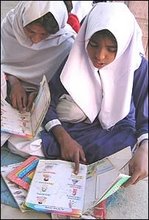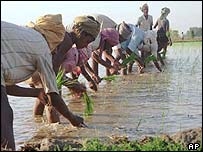PREAMBLE: This is our 5th annual review of topics we covered over the preceding year. As is also our custom, not restricted to topics covered, we lead off with praise (“flowers”) and criticism (“fertilizer”) within 3 categories: global stewardship, international development, and human rights. A synopsis of monthly blog themes follows.
1. Global Stewardship For 2011, our flowers for leadership go to
The Occupy Movement. While it had no singular leader, it represented collective leadership: like the “Arab Spring”, a democratic awakening around the world. More than a protest, and while controversial for some (especially the mainstream media, much of which is beholden to the status quo), it had the support of millions of people: the so called “99 percent” (a slogan) who see, feel and experience the steadily growing economic and social inequality growing around them, fostered by corrupt collusion between established political and financial interests.
The fertilizer goes emphatically to our own
Canada, foot-dragging at the Durban Conference on Climate Change. With once mild mannered reporter Peter Kent, interestingly now Minister of the Environment for the environmentally discredited Harper government, Canada is intent fighting a rearguard action. Harper`s Canada has no coherent climate change policy, but is full of nostalgia over fossil fuel that can be extracted from our precious tar sands and money to be made from it, even as glaciers calve ever more rapidly and their beds recede steadily upstream. Canada is on the wrong side of this issue, and poorly represented.
2. International Development Continuing the theme of climate change, flowers for this category go to the
Alliance of Small Island States (AOSIS), a 42 member coalition drawn from all oceans and world regions, sharing similar development challenges and concerns about vulnerability to climate change. AOSIS is an advocate for global sanity: an impressive five percent of the global population, 350 million people (ten times Canada, equal to the USA) but under existential threat not of their own making.
To receive a deposit of rather smelly fertilizer, we must select the EU entities (Germany, Ireland, Sweden and the European Commission itself) who reneged
without honour on their commitment to support the
Global Fund for AIDS, TB and Malaria, even as major unprecedented success of this initiative is just emerging.
“Without honour”, for the reason they gave: alleging corruption when it was the Fund itself that unearthed this in a small minority of recipient countries. This really is hypocrisy of a high order: corruption on a larger and more complex scale underlies the current economic morass of the EU, the real reason for their backsliding:
pot calls kettle black, while sitting in a bully pulpit.
3. Human RightsWe offer flowers (flowering plants in this instance because they come with roots) to
Myanmar (also known as Burma) for their movement towards democracy. It seems the five decades old military despotism is receding, and genuine efforts being made by those in power to join the international community: let the flowers bloom!
The fertilizer this year belongs to
Iran. Despite the impressive quality of people who emerge from the Iranian diaspora, and relatively advanced aspects of
Iran’s education and public health systems (when compared with most other countries in central Asia), these are otherwise dismal days for human rights in that country.
Consider the following quotation from Human Rights Watch:
•
Since Iran’s crackdown against anti-government protests following the 2009 presidential election, the human rights crisis in the country has only deepened. Human Rights Watch is particularly concerned about the broad-based targeting of civil society activists, including lawyers, students, women’s rights activists, and journalists, and a sharp increase in the use of the death penalty… Iran continues to refuse access to UN (observers) despite their longstanding and repeated requests for invitations to visit….Source: Human Rights Watch. Iran`s deepening human rights crisis. Human Rights Issues regarding the Islamic Republic of Iran. 2011. http://www.hrw.org/middle-eastn-africa/iran
2011 AS WE RECORDED IT...January: THE VIENNA DECLARATION - Evidence-Based Drug Policy and the Need for a Paradigm Shift This issue focused on Canada’s minority Conservative government`s Bill S-10, the Penalties for Organized Drug Crime Act, including the introduction of mandatory minimum prison sentences. Unfortunately, this legislation is ideological and not evidence-based. Research indicates that Bill S-10 will only serve to create greater health and social harms.
For the purpose of more objective information, the issue drew attention to the Vienna Declaration (www.viennadeclaration.com). The Declaration is a scientific statement seeking to improve community health and safety by calling for the incorporation of evidence based research into the development of illicit drug policies. Since its launch on June 27, 2010, the Vienna Declaration has been endorsed by six Nobel Laureates, thousands of scientific experts, law enforcement leaders, and former heads of state from Brazil, México and Colombia. In Canada, the declaration was signed by five chief provincial medical health officers, the Canadian Public Health Association, the Health Officers Council of British Columbia, and a growing number of municipalities which deal with these issues first hand. PacificSci also has signed.
February: REGULATORY CAPTURE – A CASE STUDY FROM CANADA: Dietary Sodium Regulation This month`s blog focuses on regulatory capture recently facilitated by Canada’s Conservative government in favour of the food industry in the context of Dietary Sodium Regulation.
The theory of regulatory capture was set out by Richard Posner, an economist and lawyer at the University of Chicago, who argued that "Regulation is not about the public interest at all, but is a process, by which interest groups seek to promote their private interest ... Over time, regulatory agencies come to be dominated by the industries regulated." More descriptively he referred to this as "Gamekeeper turns poacher, or at least helps poacher".
March: COMPARATIVE RISKS OF NUCLEAR ENERGY : Need for Objectivity in light of Japan’s Emergency. The situation of Japan, following the world’s 5th largest recorded earthquake since 1900 and resulting tsunami, was catastrophic: tens of thousands drowned, swept away with coastal infrastructure. Hundreds of thousands, were displaced, lost family members and livelihoods. The catastrophe also gave rise to a new emergency as a result of damage to several nuclear power plants, and eventual reactor meltdown.
Although there was comprehensive coverage of Japan’s humanitarian disaster, media monitored the nuclear sub-story with an intensity disproportionate to the overall catastrophe. Even some mainstream media (e.g., CTV) appeared to hype this aspect of the disaster, seemingly appealing to populist fear about nuclear power, rather than objectively placing this in the perspective of the far greater human impact of a massive earthquake and tsunami. PBS did a better job.
In light of these observations, we searched for up to date sources of scientific information on nuclear safety, and selected for reference a recent Organization for Economic Cooperation and Development (OECD) report Comparing Nuclear Accident Risks with Those from Other Energy Sources.
In conclusion, risks are associated with every energy source and decisions must be made in every context regarding the viability of available choices. As the OECD report pointed out: There is little value in rejecting one source if that which replaces it presents even greater hazards.
April: WHY IS CANADA FOLLOWING FAILED U.S. PRISON POLICIES? And What It Could Learn from NAACP's "Misplaced Priorities" Report Canada’s Conservative government is copying failed US prison policies even as its favoured role model, the US Republican Party, repudiates them: policies that lead the US to having the highest incarceration rates in the world. In Canada, a $2-billion prison-building bonanza is about to spawn more than two dozen new prisons.
The motivations behind Prime Minister Harper’s prison obsession once again appear ideologically driven and politically motivated. There is no evidence of increasing crime in Canada (the overall trend is actually down), nor is there good scientific evidence that incarceration is an effective solution to most of the crime that does occur.
These ill-considered legislative measures are creating a level of overcrowding that contravenes international standards on treatment of prisoners. It does nothing for rehabilitation, even as it displaces resources away from measures that could prevent crime in the first place.
We then offered a review of a just released and acclaimed NAACP policy report from the USA.
May: CANADIAN OIL SPILL THREATENS INDIGENOUS PEOPLE On April 29, 2011, there was a major oil spill from a pipeline in Northern Alberta, Canada. This adversely affected the Lubicon Cree people living in the area, wildlife, forests, streams and lakes.
Global Perspectives drew attention to the estimated $14 billion in revenue generated on Lubicon lands, even as traditional water sources have been contaminated since the onset of resource exploration. Despite this, Lubicon houses lack running water and plumbing. Within 3 years of the first oil wells the number of people dependent on social assistance increased from 10 to 90%. As a matter of human rights, action is required to alleviate these appalling health conditions.
It is now clear also that a competent, independent health team must be provided to the community to address new concerns about the headaches, nausea and other illness experienced since the April 29 spill. In this regard we supported Amnesty’s call for both federal and provincial (majority Conservative) governments to ensure that such an assessment is carried out with results fully available to the community as a whole, and to the general public.
June: EXTREME WEATHER, CLIMATE CHANGE AND HUMAN DISPLACEMENT In this issue we reported on the Nansen Conference on Climate Change and Displacement in the 21st Century, Oslo Norway, June 6-7, 2011. As summarized by IISD reporting services:
Climate change is the world’s most serious threat to sustainable development, with adverse impacts projected for the environment, human health, food security, economic activity, natural resources and physical infrastructure. While global climate varies naturally, rising concentrations of anthropogenically-produced greenhouse gases in the earth’s atmosphere are leading to changes which, over the short- and long-term, lead to an increase in the severity of droughts, land degradation, desertification, salinization, riverbank and coastal erosion, sea-level rise and the intensity of floods, tropical cyclones and other geophysical events. This in turn will negatively affect crop yields and food production, water supplies, livelihoods and human settlements.
An impact of particular concern is the potential for human displacement and migration: the implications for human welfare and security, and for strategies for adaptation, DRR, humanitarian aid and protection of displaced people, could be far-reaching.
However, a more positive scenario still appears to be largely a matter of choice, even as most of our current political “leaders” remain negligent in not making a serious decision to come to grips with this potentially terminal threat. To quote again from the conference summary:
“Responding to climate change has the potential for millions of green jobs, to transform societies to energy systems that are safe, that are stable and that are based on renewable energy and energy efficiency. Moving away from fossil fuels and towards renewable energy is being embraced now by more and more countries, although funding for alternative systems pales in comparison to subsidies for oil, gas and coal.”
July: DISASTER RISK REDUCTION: REVISITING THE HYOGO FRAMEWORK FOR ACTION (2005-15) Continuing from last month’s theme, linking extreme weather patterns to longer term climate change and impacts on human displacement, this month we focused more broadly on the phenomenon of disasters. Our primary sources for this material are IDMC, the Internal Displacement Monitoring Council of the Norwegian Refugee Centre, and the 2011 United Nations Global Assessment Report on Disaster Risk Reduction, both referenced.
August: REVITALIZING PHILANTHROPY IN INTERNATIONAL DEVELOPMENT:... The Bellagio Initiative Our focus this month was on a recently announced initiative, jointly led by the Institute of Development Studies (University of Sussex UK), the Resource Alliance Ltd (London UK) and The Rockefeller Foundation (new York City, USA). The “Bellagio Series on the Future of International Development and the Role of the Philanthropic Sector: Promoting Human Well-being in a Challenging Global Context” is designed to explore future relationships between philanthropy and international development including a convening to be held at the Rockefeller Foundation Bellagio Center (Lake Como, Italy), November 2011.
Our view at PacificSci is that, given the continued lagging of donor countries in meeting their long standing financial commitments to development, particularly the G7 group of nations, the role of private philanthropy has become even more important in filling this gap than ever before.
September: CASE STUDY: The Costs of 9/11 and the Creation of a National Security Establishment in Canada Earlier this month the world took note of the 10th anniversary of the terrorist attacks on the World Trade Center, New York, that took place on September 11, 2001. While memorial events honored those killed and injured, their loved ones, the rescue teams, and all who were affected, there is no doubt that the event was felt everywhere as one that destabilized the world.
Canada is an interesting case study of some of the unintended consequences of over-reaction: the Rideau Institute has released a new report that tabulates, for the first time, the number of additional dollars spent on national security since the terrorist attacks of September 11, 2001, as well as observations on the opportunities costs that this has entailed. According to the report, the sum already spent in the post–9/11 build-up could have provided significant benefits to Canada. The nearly 100 billion dollars could have rebuilt transit systems in each of Canada’s ten largest cities, it could have provided a national childcare program, or eliminated all payments for prescription medications. Any of these programs could have been fully implemented if the money spent on a national security establishment since 2001 had been used differently.
We agree with the report’s conclusion that “It is time to re-evaluate whether the dramatic post–9/11 spending on national security could be more appropriately spent over the next ten years.”
October: SUPERVISED INJECTION FACILITY WINS LEGAL BATTLE IN CANADA The purpose of supervised injection facilities is to reduce the harms associated with injection drug use. This said, the way forward is decidedly uphill for any society that pits the perceived interests of “law and order” against public health interests. Insite, a supervised injection facility in British Columbia, Canada’s western most province, illustrates this struggle.
In May 2008, the British Columbia Supreme Court struck down the provisions of the Controlled Drugs and Substances Act that deal with possession and trafficking but suspended the declarations of invalidity for one year to allow Canada`s Parliament to bring the law into compliance with the Constitution, and the Court’s reasons, which ensure Insite a permanent constitutional exemption. The Attorney General of Canada (the Harper government) appealed the decision. On January 15, 2010, the BC Court of Appeal dismissed the appeal by the Attorney General of Canada, allowing Insite to continue operations. The Attorney General filed a further appeal with the Supreme Court of Canada. Early in 2011, it was announced that the Supreme Court of Canada would hear the appeal from Attorney General of Canada.
On September 30, 2011, the Supreme Court of Canada ordered the federal Minister of Health to grant an exemption to Vancouver’s supervised injection facility under the Controlled Drugs and Substances Act. By ruling that addiction-related drug use is a health issue and not simply a criminal justice issue, the Supreme Court decision upheld Canada’s constitutional rights to life, liberty and security of the person and the role of public health interventions of this nature.
Under Canada’s Conservative government, an unremitting effort had been made to close the facility down, despite support from the provincial government. Their objections were based on political ideology. In stark contrast, the decision made by the Supreme Court, was based on a careful reading of Canada’s Charter of Rights, and scientific evidence that the facility was saving lives, and not promoting the drug culture as the federal Conservatives had claimed.
November REVISITING REGULATORY CAPTURE 1) Government- Sponsored Gambling, and 2) Government-Industry Oil Sands Emissions Monitoring As introduced in our February 2011 blog, “regulatory capture” (RC) is the process by which regulatory agencies eventually come to be dominated by the very industries they were charged with regulating. It happens when a regulatory agency, formed to act in the public's interest, eventually acts in ways that benefit the industry it is supposed to be regulating, rather than the public. As portrayed by The Economist (citing Posner) "Regulation is not about the public interest at all, but is a process, by which interest groups seek to promote their private interest ... Over time, regulatory agencies come to be dominated by the industries regulated."
Recent work by Frederic Boehm throws new light upon this phenomenon: he presents an array of measures to reduce different types of corruption in regulatory processes, preventing capture and ultimately safeguarding the independence, effectiveness and efficiency of regulation.
This blog highlighted two examples: 1) the extraordinary phenomenon of governments in many countries (including several Canadian provinces) both sponsoring yet also charged with regulating the gambling industry, even as it exacts an enormous toll on health (a provincial responsibility in Canada, therefore an obvious conflict of interest); and 2) a government-industry advisory group charged with examining emissions from the Alberta oil sands industry, shown to have been ignoring substantive evidence from reputable independent sources.
December: EUROPEAN COUNTRIES RENEGE ON COMMITMENTS TO THE GLOBAL FUND Until recently, there was optimism that most would honor their commitments to support the Millennium Development Goals (MDGs). Last year’s UN Special Session on MDG outcomes provided an important reminder: in relation to Goal 8 (Develop a Global Partnership of Development) there was a message for all donor countries, namely that, without more reliable support from developed countries, several Goals are likely to be missed in many developing ones.
However there is now serious concern regarding the 6th Goal, which comes within the remit of a “Global Fund to fight AIDS, Tuberculosis and Malaria”. Tragically, in November 2011, several European entities (Germany, Ireland, Sweden and the European Commission itself), ostensibly in response to fraud in a small number of developing nations (4 out of >120 recipient countries), have frozen or drastically cut back on their funding support to the Global Fund as a whole with the effect that it will not be able to take on any new commitments for a 3 year period.
The documented fraud amounted to $34 million, 0.03% of the Fund’s whole portfolio, and all the evidence of fraud cited in the press was uncovered by the Fund itself after it undertook investigations. And, the Fund had publicly announced these findings as they were uncovered. There was never any duplicity or attempts to cover up the losses. It would be interesting indeed to see how this compares with the extent and impact of fraud in the European Community itself, especially on the heels of various banking collapses, and national defaults. Pot calls kettle black?
The ethics of the European Community need to be called into question. It appears that they have held the Global Fund to a higher standard than they themselves could meet. At least one should expect Europe to be honest about this. Why not lay the blame for reneging on commitments on their own mismanagement, and by extension accept responsibility for any reversals that will result from funding shortfalls in global efforts to combat these diseases over the next 3 years?
ENVOI: PacificSci`s regular blogs will continue next month.


























